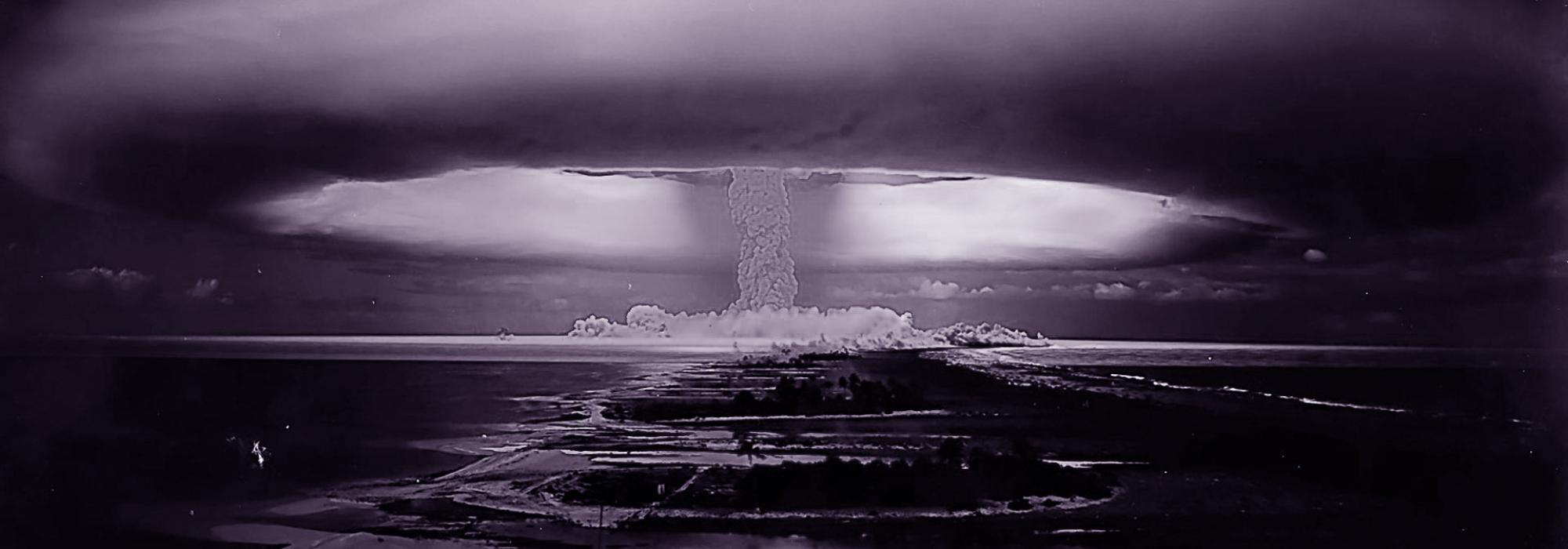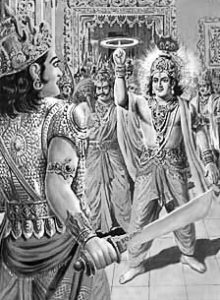The primary characteristics of the modern world are material wealth and individual freedom [c. 1950]. Today, an individual desires to be independent as much as possible. However, in practice, he seems to think that he should not have anything binding him, he will not pay heed to anyone’s words, and he would like to do whatever he desires without anyone questioning him—this has been the result. There is a loosening of the various relationships, like father-son, husband-wife, ruler-citizen, teacher-student, and divine-devotee; the love and respect that these relationships carried are fading away. Some people feel that any sort of hierarchy like elder-younger or senior-junior amounts to injustice. As it is possible to obtain luxuries with money, everyone’s aim seems to be the acquiring of wealth, as much as possible and as soon as possible. People thus don’t mind resorting to a path opposed to law and to dharma; and there are people who actually resort to this path. There is a rise in falsehood, cheating, corruption, and hypocrisy. Excessive desire—greed and attachment—is the root of all evil. To add to this, there is an increase in industrialization leading to the creation of large cities that house high-earning workers, who form a class by themselves; due to this, the poverty of the poor and the wealth of the wealthy are on the rise; unemployment, hunger, dissatisfaction, and distress are rampant. Just like individuals, countries too have become either well-fed and prosperous or malnourished and oppressed.
With 6 per cent of the world’s population, the U.S.A. holds 40 per cent of the world’s wealth. Still one-third of the nation is under-nourished and inadequately clothed… About 50 per cent of the production of the U.S.A. was effectively in the hands of less than 2,000 people.
The money power and politics is the greatest danger to peace. – Religion and Society, p. 95
This is one of the major problems of industrialization. Moreover, one needs to provide a lot of raw materials to build machines and to run an industry; one needs to find customers who will buy the heaps and heaps of the products that are being churned out of the factories. One will need to deal with the economics and the crises associated with it; one will also need to find solutions for these. Whether one needs the products or not, one will always need to keep the machines running. As a result, more than the essentials like food and clothing, industrialization is giving rise to luxury products and dangerous weapons of war. When there is distress in the world and when you have the equipment needed for warfare, how far is one away from a war?
In Europe and America, ‘business was business’ and if profits could be secured by supplying aggressor nations with arms, and Japan with petrol and scrap iron she so badly needed for her attack on China, then profits were taken up to the very eve of the war. – Meaning and Purpose by K. Walker, p. 164
D. N. Pritt, Queen’s Counsel and President of the World Democratic Lawyers’ Federation said – …The world is spending on the preparation for war a great deal more than it had ever done even in actually running a war. People are more likely to cause war because of the existence of armaments. Persons who are causing this danger of war openly and overtly are the ruling classes of the United States and its satellites. It is argued that the U.S. is obsessed by the danger of the spread of communism. That is not the whole truth. The fact is that they cannot keep the economy of the United States safe from a crash unless they formed some colossal demand for production of something; the easiest thing is to produce armaments. (The Hindu, 2nd January 1955)
If a war is fought, it becomes a means of fulfilling the selfish motives of a few, resulting in them accumulating wealth; such people will silently encourage war. When a war is fought tens of such people are benefitted but millions die. In the backdrop of this, the common people are unhappy both in times of peace and of war. Indeed the period after war is never a happy one. The victor is like a loser while the loser is as good as dead. [As for the victors, they would have spent a great deal of resources and suffered losses in the course of the war; as for the losers, they would have lost everything; many of the soldiers would have died while the survivors would have become handicapped, which is sometimes worse than death.] One’s restlessness and dissatisfaction are not easily overcome and thus preparations for another war begin; this is also assisted by machinery and technology, thanks to the progress of science. It is an irony that those that should have helped in bringing comforts and happiness to humans are now resulting in their distress. Excessive desire and selfishness of human beings are the roots of these evils. In the past, it was difficult to earn money and difficult to save the money; it was all the more difficult to safeguard the money saved. Now we have banks that take care of our money. They have grown so powerful that some banks, it appears, are rich enough to buy nations. They can take the entire nation’s administration under their control. To speak of ideals is mere lip-sympathy and money is the ultimate goal. This in practice is unhealthy and impractical.
The cynic, commenting on the principles popularized by the French Revolution says that Liberty means “I can do as I like,” Equality means “You are no better than I” and Fraternity means “What is yours is mine if I want it.” It has led to anarchy, mediocrity and interference. – Religion and Society, p. 93
In the meanwhile, prices have gone up and edible food has turned gold. The poor will soon die of hunger. How much ever he earns, he cannot even fill his stomach. Moreover there are expensive restaurants, cinema halls, bars, and other luxurious distractions. These spell doom to the poor and are the fortunes of the wealthy. As the governments also get a share of the profits from these establishments (in the form of taxes) they do not restrain them. All democracies are dominated by the rich. The one who is hungry will turn cruel. A ferocious tiger or a king cobra will remain silent after it has been fed. Humans too are animals, moved by hunger, sleep, sex, and fear. It is only because of these traits that he remains a man; else, he would have turned into a demigod. When one is either on a half-stomach or an empty stomach, roaming about in search of employment, if a huge car runs over him, he would not console himself by thinking “Fortunately I’m human and not an animal!” (This consolation is provided by none other than the king of the demigods, Indra! This is connected to an episode that comes in the Śāntiparva). It is also difficult to live a life that is described in the Ajagara-vrata, subsisting on whatever was available and being satisfied with it; it is hard to find even one in every thousand who might live like this. A single person might console himself with something or the other, but there will be millions of others like him who continue to be dissatisfied, intolerant, and jealous. They will then attack the one who has consoled himself; this will result in a fight. If one is unable to fight it will result in the flow of tears, irritation, restlessness, protest and boycott. If the opponent is strong, they will face a lot of pain and will lose their lives; if they are strong in numbers or in character, it will lead to a revolution. This is how there were revolutions in countries such as France and Russia. As long as there are ups and downs in production and distribution of wealth, this sort of inequality will last. Thus the world is looking forward towards equality; if one’s stomach is filled that will cure the mad quest for equality. No other reaction is necessary for it – there seems to be some truth in these words. For this, the whole perspective of the modern individual needs to undergo a transformation. The transactional mindset should be replaced by a dhārmic mindset. Mere charity doesn’t suffice. For instance, Christianity that has charity as one of its main principles has not been able to get rid of war. [The same applies to Islam; one of its five main tenets is giving alms.] The Christians fought each other under the pretext of saving civilization and uplifting them, which resulted in the two world wars. It looks like we are getting ready for another big war [c. 1950]. Charity might eradicate inequality in society but the problem of war will persist.
The Mahābhārata succinctly offers a solution to this problem – “Artha and Kāma should not violate Dharma; they should instead adhere to Dharma.” This would perhaps lead to a transformation of perspective, which is more attuned to dharma – both emotionally and intellectually.
Today’s industrial world will not regress. It doesn’t seem to even stop briefly. Backward nations—i.e. those countries with agrarian economies—now want to equip themselves to participate in the industrialized world. When and how can the greed, selfishness, and excessive accumulation of wealth that lie behind the industrialized world get reduced? How to get out of the vicious net of currency exchange? Even if we desire to let go, it will take at least as much time to get out of it as it took to get in. Perhaps it would need much more time to get out of it. Contracting a disease is quick, curing it takes time. The west seems to have understood this difficulty and is trying to overcome. However, their efforts seem to be futile; thus there are several labour strikes even in their societies. They are helpless in managing the problem and yet claim to be finding solutions. At the same time, in the countries of the east, due to political instability, they have lost the purchasing power, the opportunities, and the freedoms that they had earlier.
Unless we sacrifice comforts we won’t be happy. This might seem strange but is still true. After World War I, people of different countries seem to have realized this. They have learnt that during times of peace, if there is unrest in the rival countries, it is difficult to maintain peace within the borders too. They have recognized that if the other countries are lagging far behind it is difficult for the rich countries also to survive in peace. The rich countries are not only helping the poorer ones but also trying to establish certain international organizations that want to bring stability in currencies across the globe. However, the influential parties (i.e rich countries) are rather tight-fisted when it comes to managing these organizations. One must adhere to justice while running such an establishment. But what is justice? Who is to determine what justice is? Even if majority opinion is for a certain idea, the ones agreeing are only those who are benefited from the idea; the rest will oppose it. It is rare to find a unanimous opinion. Each party claims its opinion to be the right one and there is, finally, no solution to the problem. It is difficult to overcome such a stalemate. We only need to wait and watch the direction this fight is going to take.
One view is to accept defeat and console oneself with the idea “I will enjoy the limited comforts that I have access to!” Another view is “I will break but I will not bend!” The world has only these two views. A bundle of paddy sticks tied together will bend in a flood—and survive. A tree, however, faces the tempest head on—and breaks; the branches are destroyed and it remains a stump. A few praise the bundle of paddy sticks (for its flexibility). Others opine that if we bend, we will be buried; it is wrong to bend to circumstances. When the great war of the Mahābhārata took place, these views were discussed at length. Finally they didn’t agree on a view. The war took place and reduced the burden on the earth.
It’s rare that a compromise is struck between two warring factions. It’s rarer still for the compromise to be just. ‘Justice’ is always on the side of the victorious, who is typically the stronger one. Rather, he might call it justice. Such a compromise always carries within it a seed for war. And if there is a war, there will be annihilation; the victorious is as good as the defeated. To recover from the shocks and losses of war, the victorious must suffer as much as the one defeated.
If people give up material greed, adopt a lifestyle of simplicity, develop an attitude of letting go, and realize that the purpose of accumulation of wealth is not Indulgence but Sharing (त्यागाय संभृतार्थानां – Raghuvaṃśam 1.7) then they might be able to overcome selfishness, greed, and hatred; the world will be in peace. Like Kālidāsa says, Śiva is the sole lord of all wealth but is himself a kṛttivāsāḥ – i.e. wears the hide of an animal! (एकैश्वर्ये स्थितोऽपि प्रणतबहुफले यः स्वयं कृत्तिवासाः… – Invocatory verse of the Mālavikāgnimitram). If one alludes to the term vairāgya, people must not automatically assume that it refers to going away to the forest and turning into an ascetic, resulting in the destruction of all kinds of activity like trade, agriculture, handicrafts, begetting progeny, etc. thus leaving the country barren. If we have before a high ideal like the attitude of letting go, that will naturally lead to prosperity and peace. Unless parents sacrifice their needs and comforts for the sake of their progeny—either out of love, a sense of duty, or out of compassion—how will the children get nourished? If the parents enjoy the luxuries of life for themselves, enamoured by the material world, tuning into spendthrifts, then the family will also be barren. Be it indifference or indulgence, it ultimately leads to dissatisfaction and intolerance. Śiva gives away excessively to people who submit to Him but Himself remains clad in animal hide! If we remain attuned to the society and share our riches and our poverty with the world, living as one amongst everyone, we can achieve a great of peace. All it requires is letting go of ego. Parameśvara is devoid of ego, is compassionate, and is unassuming. If we look up to high ideals such as compassion to everyone, renunciation of arrogance, having a spiritual outlook, and sharing with others, then we will be peaceful in family life, if not attain the highest wisdom.
Today, the world has turned into a battlefield. Just like the Pāṇḍavas and Kauravas, there are two factions which have not only raised arms against each other but have actually prepared an atom bomb. There is nobody like Kṛṣṇa today who says, Let us try and compromise. If the war is averted, many lives will be saved. Let me go to the opposition camp and at least make an attempt to stop the war. These days, people seem to believe that war is the only way to achieve peace; defeating the enemy is the only means to guard oneself. They seem to give more preference to preparing weapons for war than taking care of their essential needs such as food, shelter, and clothing and focusing on a peaceful life. Mutual distrust and fear are spoiling people’s minds. A few people say that peace in the world can be established only through honest means – they say this either for lip-sympathy, or out of a sense of formality, or perhaps in all genuineness. Some people go to the extent of saying that we must look up to India to guide us on the path of peace and Indian culture should be our tool to deal with the situation. It is this path of peace that is discussed in the Mahābhārata, the ancient epic that is hailed as the fifth Veda. We are, however, not sure, who will listen to the cry of these people; धर्मादर्थश्च कामश्च स किमर्थं न सेव्यते! (Why doesn’t he pursue the artha and kāma that is aligned to dharma?)
Duryodhana shunned dharma. He did not accept the law of his times nor did he embrace peace or accept compromise. Under such circumstances, war was inevitable. Duryodhana dug his own grave, which also resulted in the destruction of eighteen akṣauhiṇis. The world was left with the helpless cry of several women and children. Perhaps the Pāṇḍavas and Duryodhana attained vīra-svarga but the people who were governed by Duryodhana ended up in vīra-naraka!















































